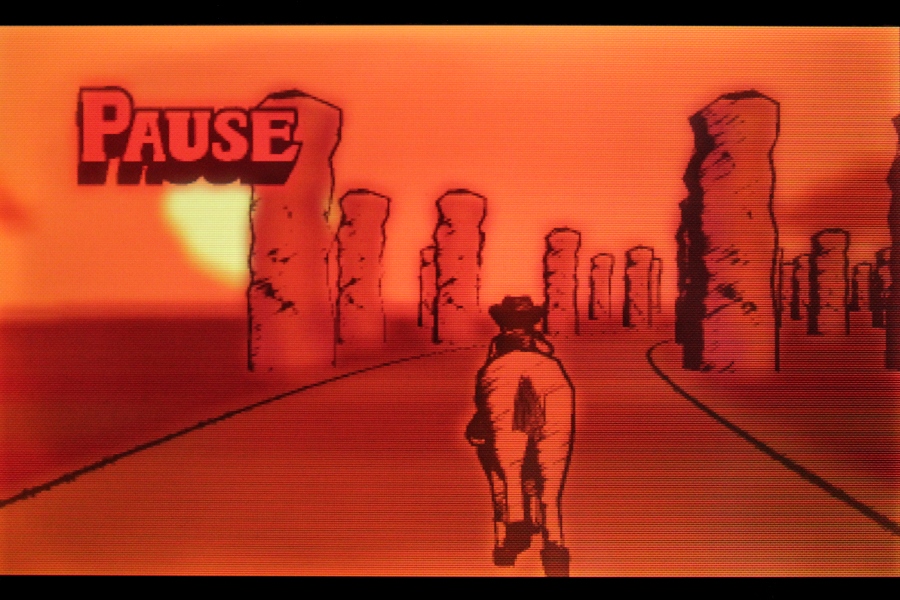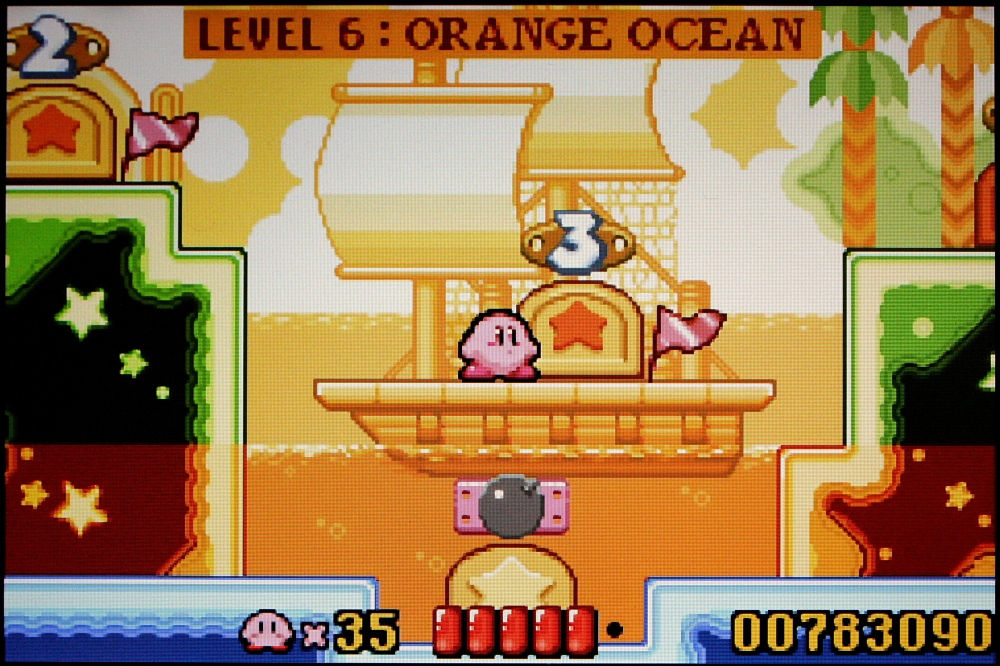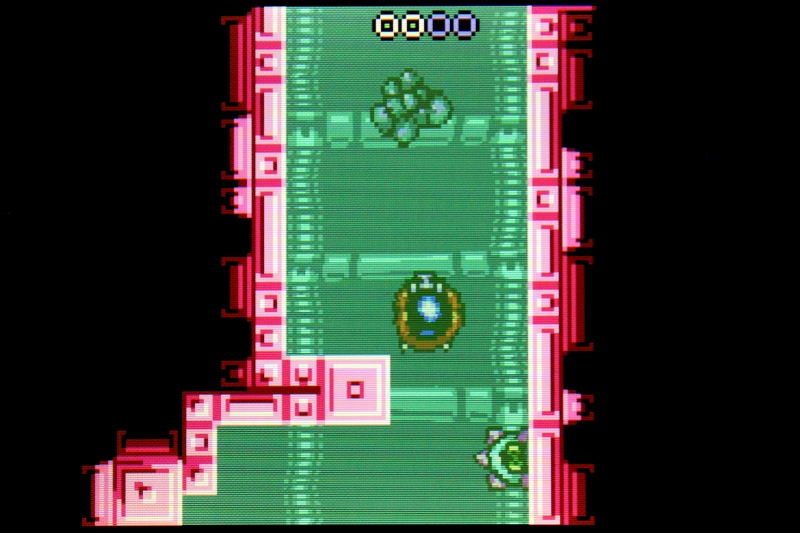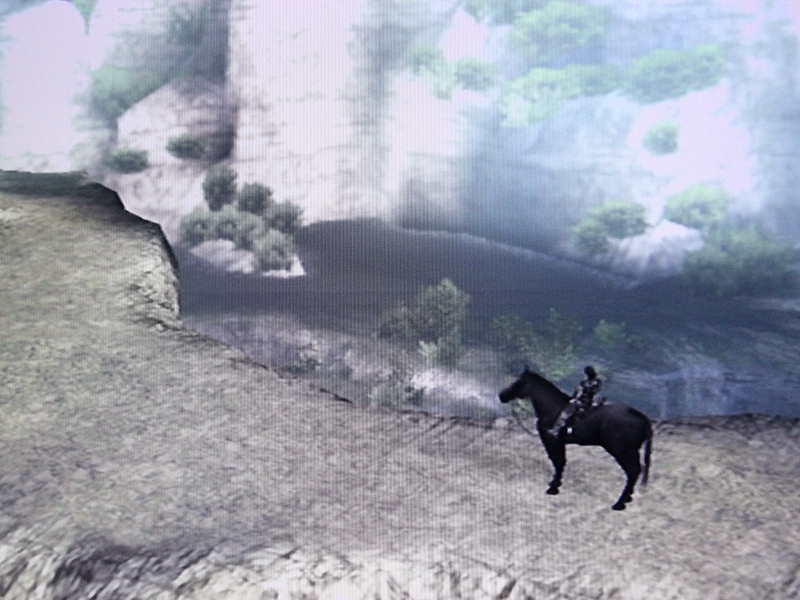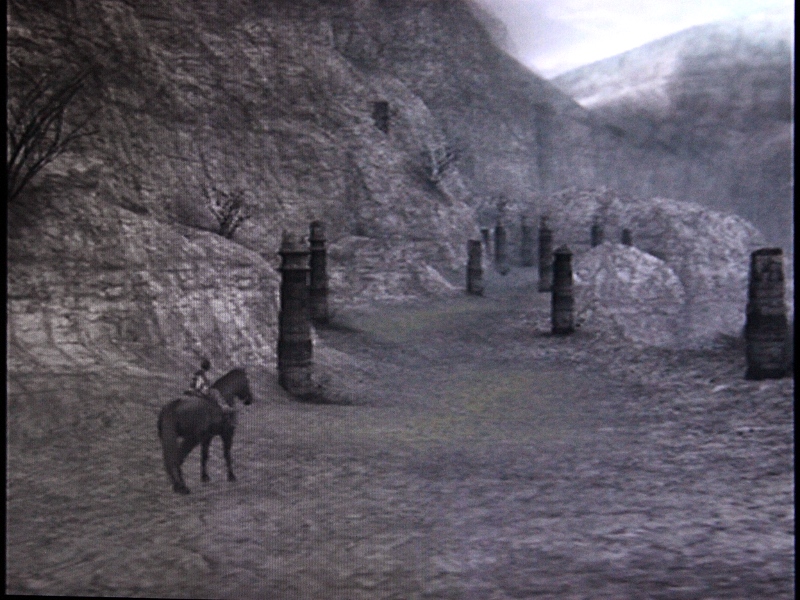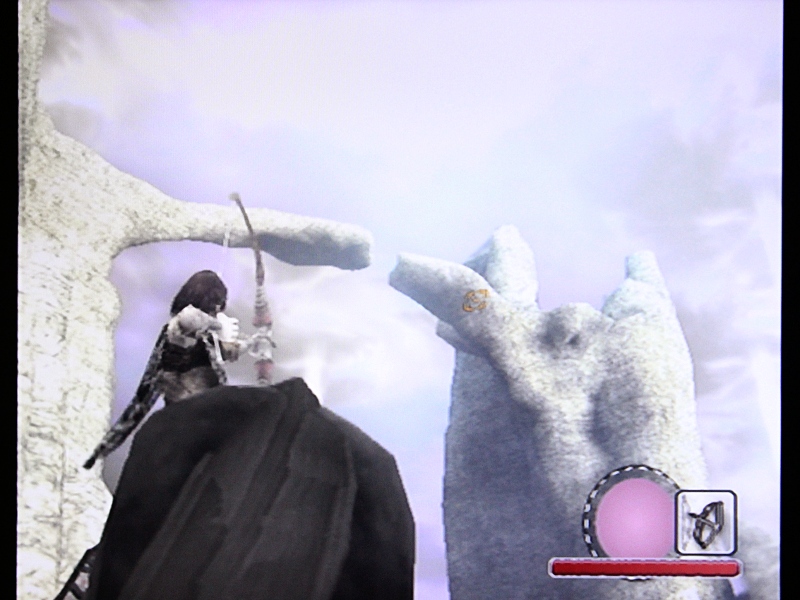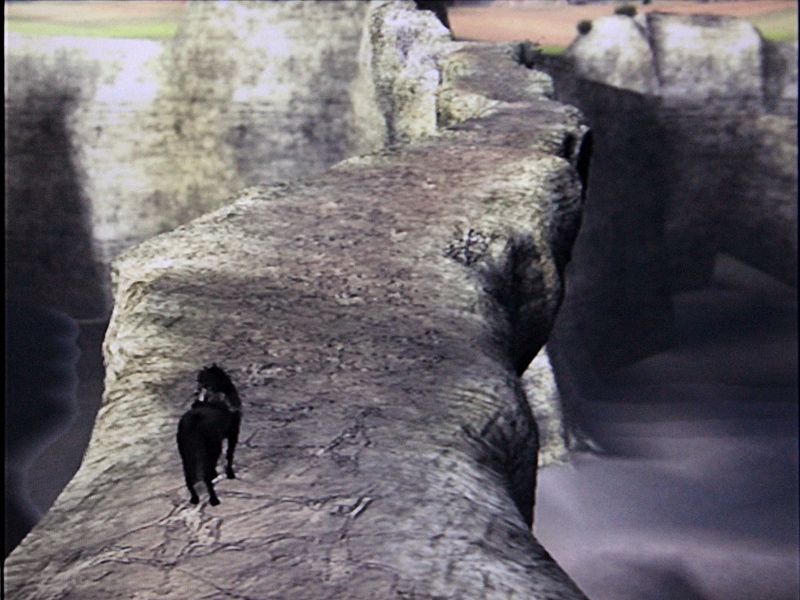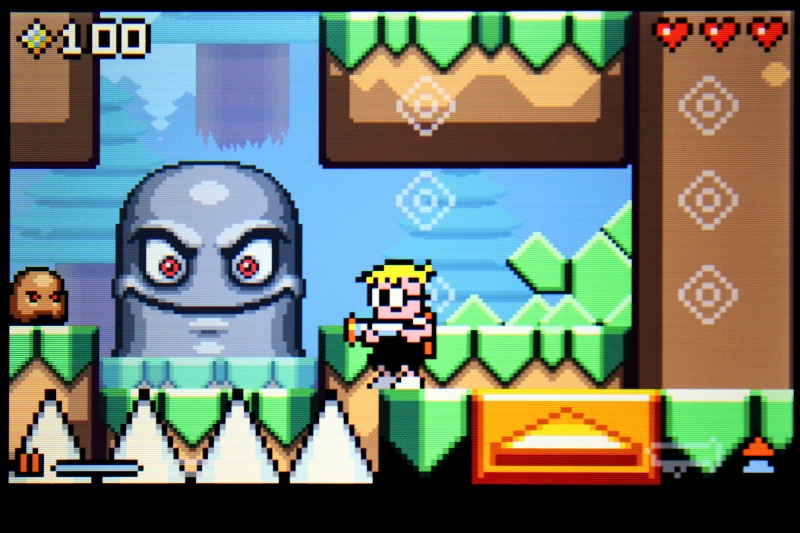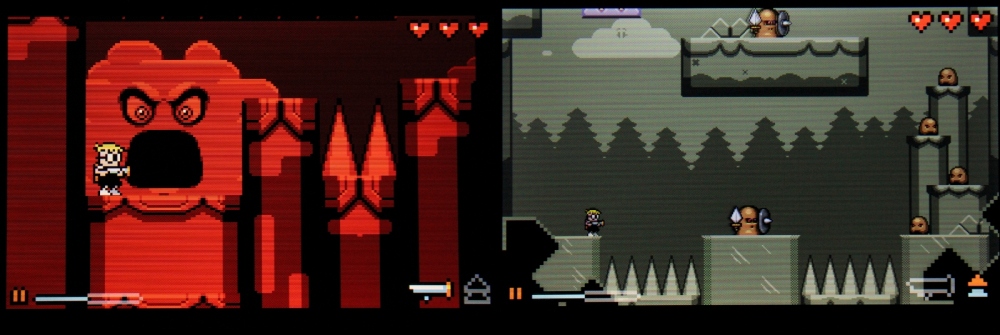Phantom Hourglass is the 2007 direct sequel to The Wind Waker, made for the Nintendo DS. Following on from the events of the previous game, Link and Tetra are traversing the ocean, when along the way they come across the Ghost Ship, and then decide that it’s a good idea to board it to find treasure. Spoilers, it’s not a good idea, Tetra is held hostage, and the Ghost Ship disappears into thin air. You join the action as Link after he is washed up on a small, tropical island…

Before I get into this more, I really don’t have anywhere to interject this so I’m putting it here, but I first played this game in 2010 I believe, and I remembered getting pretty far along before just dropping it. I checked the file out of curiosity and discovered that I must have given up in frustration after not being able to beat the 2nd to the last boss (counting the several forms of the final boss as one fight). Yeah, I made it through the last temple and gave up! Can’t imagine doing that now, I tell ya, I must’ve really not wanted to go through the Temple of the Ocean King one more time. It’s funny though, I remembered up to one boss fight as clear as crystal, then the parts I played after that I only had a very vague recollection of, as I was going through the areas. Normally my recollective memory is better than that. Perhaps I was so checked out at that point that I wasn’t paying attention enough to commit it to memory, who knows.
So anyway that’s the basic plot, and my history with the game, but how about those first impressions? Well… Graphically it’s about as impressive as a PS1 game, which is to say, it can be pretty freaking ugly. I know, it’s all the DS can handle for 3D graphics, but if this is all it can do, make a 2D sprite based game! Shit, Minish Cap looks fantastic even today, just imagine that but even more refined. *sigh*, I can dream. For the limitations I guess that it’s about all that you can expect, but the textures look horribly pixellated up close, something that they have an annoying habit of showing you. Most of the game is played from a 2D perspective, and it looks fine, if not nothing special then, but for some ungodly reason they insist on zooming in during cutscenes to show it up close, warts and all. I mean, look at link’s hair, and how a huge chunk of it doesn’t stick out from his head. Just makes it look super greasy, or something. Blah, livable, but not pleasing really.
One thing that they use a whopping three times during the whole game is a paper art style for cutscenes, and I really would’ve liked them to use that more to accentuate the story to a better degree. A little bit like Okami does it, if you’ve played that. (Side note, play it if you haven’t. I’m writing a post about that too, I absolutely adore it).

Link, with his best Crash Bandicoot impression.
Then how about the music, surely that makes up for it?? Well, there are a few pleasant tracks, but most of it is pretty bare bones to be honest, and you hear the same few tunes over and over again with little variety. Off the top of my head there’s a generic town theme, generic island theme, cave song, dungeon music, normal battle tune, boss theme (maybe they all have unique varieties? I never even noticed to be honest), and the great sea tune from Wind Waker. I’m seriously not able to think of anything else, and of those listed above, I only actively like 2 of them. There are several call backs to other games in the series during the cutscene music, but you’re not hearing that on a loop constantly as you play, so it doesn’t impact as much. Mediocre soundtrack, with a few ‘highlights’, if you even want to call them that. Nothing special.
… Well this isn’t promising so far, is it? ‘Okay, so the reason you’re playing it Lanky’, I can hear you ask, ‘is because the gameplay must make up for the above… Right?’.
Umm. Not really. The gameplay for me has the same wishy-washy feel, in that it’s not bad, but it doesn’t really excite me much. The largest problem I have is that it’s fully touch screen controlled. The only use that the buttons have are shortcuts to stop you from having to tap in the corners to open up menus. Everything else you’ll be doing with a stylus in your hand. Now, I’m old school when it comes to games, I like my fingers to be pressing buttons, it feels comfortable to me and I’m used to it. By comparison there’s a feeling is general ‘sluggishness’ with touch screen controls (and motion controls, but that conversation is for another day), like the whole pace of the game is slower because the touch screen can’t interpret fast inputs properly. Try and change direction too fast for example, and Link will swing his sword instead. Try to roll and he may also try to attack, or just not do it at all. It’s never rewarding to do something right, more like “Why didn’t you do that the first time I told you to?!”

The lack of buttons also makes the action side of the game fall flat. You can swing sideways, thrust forwards, with Link randomly deciding between the two at times, you can jump attack if Link decides that he’s standing far enough away to do it, and you can spin attack, but do it too much and you’ll get stunned from dizziness. Just… Ick, it’s not very satisfying to fight enemies unless you just pull out your bow and shoot things, honestly. Even the early boss fights suffer from that lack of intensity, there’s only like 3, maybe 4 boss fights that had any sense of urgency or panic. Maybe good for small children, but for me? Not really.
Thankfully the developers did realise this and made most of the game more puzzle based instead. The puzzles themselves are mostly self-explanatory, with very few, if any points where you’ll need to look up a walkthrough to simply beat it. Again, maybe that’s a good thing for newcomers, and maybe that’s who they decided to try to target with this game, but why make it a sequel then? Granted, you don’t need to have played The Wind Waker at all to understand what’s going on, but it’s not going to hurt either.

The largest part of the game is the Temple of the Ocean King. Located on the island that you start the game on, you’ll go through here no less than 7 times if I’m remembering correctly. You may be able to do it in 6, but they expect seven trips. Through that same dungeon. Doing mostly the same puzzles (with some shortcuts as you gain items), just going down further and further each time. If that wasn’t enough of a pain in the arse, you’re on a time limit too! The titular Phantom Hourglass gives you a certain time that you’re allowed to stay in there (you gain more hours for defeating bosses, and occasionally salvaging small amounts from the sea floor), and if it runs out… I actually have no idea. I guess that you either get teleported back to the entrance, or maybe it just a straight game over, I’ve never had it happen.
There are so-called ‘safe-zones’ where time doesn’t tick down, allowing you some breathing room to think, and it allows you to go unnoticed by the enemies, the main variants of which are unkillable, fyi. (Until way, way later on anyways). You have to tip-toe around them trying to not get spotted or else you’ll lose time from them hitting you. You also respawn at the entrance to the room, you know, to make the 13 floor dungeon take even longer. Okay, I’m ragging on it a little bit much, it’s not that bad to be fair, but again sticking with the theme, it’s certainly not really enjoyable either.

Subtle Majora’s Mask reference?
The rest of the dungeons are fine, but again, unremarkable. Not long, particularly challenging, or even varied. There’s one later on where you control two characters for a segment, which is probably the most creative they get. It’s mostly just trundle around figuring out the one way that you can go, hitting switches in certain orders, getting your new item, and having an extended tutorial on how to use it, then use your new item to beat the boss. Real paint-by-the-numbers stuff.
Even the sidequests are nothing special. Firstly, like its predecessor, this game is based on a series of islands in a vast ocean. Okay, vast is the wrong word, the DS couldn’t handle something so large, but a majority of your time will be out on a boat, especially at first. It’s not even as satisfying as sailing was, here you just draw a line on the map and the boat follows it, then you just look at the screen and shoot the occasional hazard/enemy with your cannon. I get so bored that I shoot the seagulls that follow you along. They usually don’t appreciate it. Well, the one that takes a hit gets vaporised, but the others scatter away immediately, haha. Luckily there are also warp points throughout the ocean that you can get, it’d be unbearable without them.

Speaking of drawing on the map, that is an integral part of the game. Throughout the game you get various hints on how to solve puzzles, and at almost any point, you can pull the map down and scribble what you need to on there. That’s actually one really nice feature that I wish more games could incorporate, jotting notes down without needing to do it on real paper. Now here’s my question. Why not make it a standard, button controlled game, leaving the map on the bottom screen so you can write down whatever you want, without interrupting the gameplay as much? Would’ve been so much better! There are some cool elements that they have you doing, like mapping out an entire uncharted isle for yourself, but again, it feels like some of the potential is left untapped.
But that aside, back to the sidequests. Firstly there are treasure maps throughout the game that lead to salvageable treasures on the ocean floor. Unlike Wind Waker, it’s more involved here. You control the arm as it plunges through the murky depths, avoiding Octo-mines along the way. It’s surprising when it first happens, but aside from that first time they should have cut it out completely. It’s just a time sink, and mostly for extra ship parts which are nice, but totally unnecessary. Oh, and don’t miss the chest at the bottom, because for some stupid reason, that makes you start from the top again, like this is some strange claw-machine game, played underwater.

Another main collectible in the game are gems, specifically Power, Wisdom, and Courage the cowardly dog gems. There are 20 of each, and with each group of 10 you can get an upgrade. Power ups your sword’s power, Wisdom ups your defence, and courage enables you to fire sword beams. I just leave Power on all the time, it puts flames on your sword. Flames. Not just like a decal, I mean actual, burning fire. How cool is that?!
There’s also fishing. Fishing exists. That’s about all I have to say there… Fine, I’ll carry on. It’s a nice enough mini-game, you pull back on the rod to build up strength, then reel in the fish, rinse and repeat a few yards at a time until you’ve caught the fish. Most of the time is spent in the boat trying to catch up to where the fish is on the map! They constantly move around making it hard to chase them, you have to kinda cut them off at the pass, if you know what I mean. Not easy when you need to stop and draw a new route on the map just to change course, and of course it makes it waste more of your time without actually making any progress towards anything.

Then there are the standard mini-games to do, like a shooting gallery, and a bomb shooting gallery, race-through-the-maze, etc. Ya know, typical stuff. The only thing is that you won’t be doing a lot of these because there are no heart pieces in this game, only fully heart containers. If that weren’t enough of a cut-back, there are only 16 hearts in the game, instead of your standard 20. This all leaves it feeling a little ropey on actual content, and it’s more interested in wasting your time sailing and shooting seagulls than having worthwhile stuff happen. I dunno, it’s like they realised that the DS couldn’t handle what they initially had in mind, but it was too late to completely overhaul the project, so they just settled in it having less stuff to do. Maybe since Spirit Tracks took out the sailing it has more stuff, I’ve not played it beyond the first hour, so I can’t say whether it’s better about that or not.
And then on top of that, there are just a number of upgrades that you straight up buy, which again, feels like they cheated out on making more legitimate content. It also makes this a good time to talk about money. You know how in some games it’s hard to come by? Not here! Right from the get-go you can carry (what I assume to be the maximum of) 9999 rupees. At the end of the game, I was sitting on 7600+ spare rupees, with nothing to buy, and a whole bunch of treasure and ship parts that I could’ve traded in for even more cash. Money is no object, and if you ever hit a point where you don’t have enough, you’re playing the game wrong. I’m not saying that’s bad, but do I seriously need what must’ve been ten thousand spare rupees lying about? Let me trade that to other games where money isn’t so readily available.

I suppose I haven’t mentioned customizing your ship yet. Well, like I mentioned earlier, the are ship parts in the game, 8 different types (prow, handrail, hull, chimney, anchor, cannon, wheels, and the bridge), and there are… Probably 10 or 11 different themes for each of these parts. Build up a ship consisting of several pieces from the same set and your ship gains extra hearts for its health, because for some reason the ship needed its own health system instead of just using yours. Funnily enough I actually got all of the demon parts before the end of my playthrough, so I’m went around saving the world on Satan’s ship! It brought me great pleasure to see that. There was also a way to trade ship parts via wi-fi, but all DS games have had their servers shut down, so this is no longer available. *single tear*

Just glancing through my notes to see if I’ve missed anything… Oh, there is at least one saving grace that I enjoyed, and that is some of the writing. Linebeck in particular has some awesome lines, with a little bit of slap-stick humour thrown in too. There is also a problem with the writing at the same time, which is that the text box doesn’t include a name to tell you who is speaking. Such a small oversight, but there is no way to tell when one person stops talking, and another one starts. Minorly confusing if you rush through dialogue due to being a fast reader, like I do.

That’s pretty much my thoughts. Looking over it, it sounds a lot more negative that it really is. The game is the definition of average, and I want the dictionary to have a picture of the box art next to the word. It doesn’t do anything inherently wrong at all, I can’t pick a single flaw with the way anything is executed here, it all works. Occasionally it has flashes of ‘Oh, maybe it’s going to step up a gear now’, but it just never does. I just never stopped to just take a step back and think ‘Wow’. Do you know what I mean? I will say though, not too short, not too long. The ending felt like it was in the correct place, and dragging it out any longer would’ve definitely made my impression of the game worse.
Overall, if you really, really liked The Wind Waker, and want a little side-story addition, and you wont mind the touch screen controls, I can recommend it. Or if you’re a hardcore Zelda fan who wants to experience all the main games in the series (That’s my reason for playing it), then I can somewhat recommend it. I don’t regret experiencing it, though I’m unlikely to ever play it again in the next 5 or more years, if at all, let’s put it that way. Maybe if you’re interested in getting into the series but don’t know where to start this would be good for you too. It’s pretty lax for the most part, and you’re never in doubt of what you have to do to progress, but I will say, if you are looking to do that, it’s gameplay isn’t really representative of most of the other Zelda games. (Bar Spirit Tracks, for obvious reasons.)

Well, that looks familiar… I’m going to go repair that fourth wall now. Thanks for reading!

